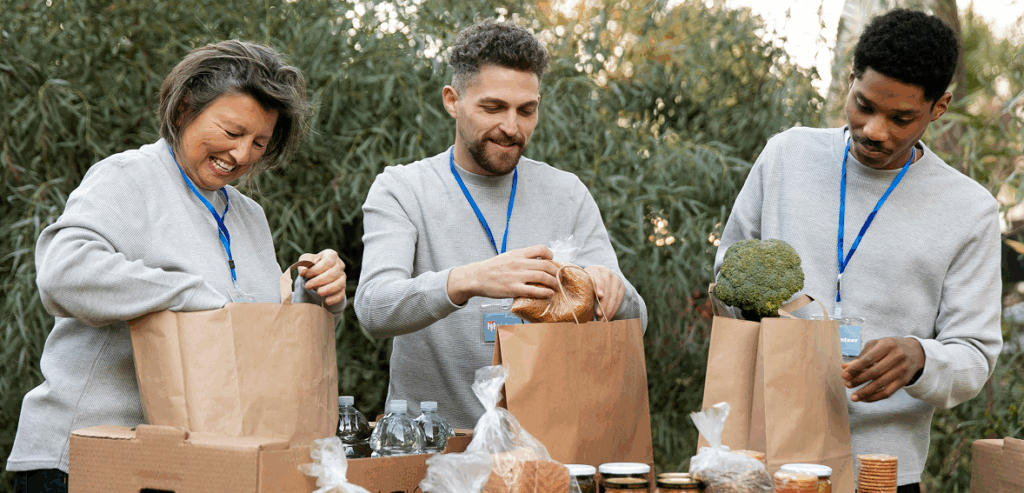Delaware may be one of the smallest states in the U.S., but its food culture is anything but limited. Over the past decade, the state has experienced a quiet yet steady transformation in how its residents and visitors dine. From once relying primarily on traditional American fare and local seafood, Delaware is now home to an increasingly diverse culinary landscape. The rise of locally sourced ingredients, globally inspired menus, and innovative dining experiences reflects a broader shift in consumer preferences and food entrepreneurship.
The evolution of Delaware’s food scene mirrors trends seen across the country: diners are becoming more conscious of what they eat, where their food comes from, and how their dining choices affect their health and the environment. Simultaneously, younger generations are craving novelty, fusion, and authenticity. In response, a growing number of establishments in Delaware are moving beyond the expected, rethinking everything from menu design to sourcing models.
The Rise of Farm-to-Table in Delaware
As health consciousness and environmental awareness grow, so does the demand for farm-to-table dining. This movement focuses on using ingredients that are sourced as locally and sustainably as possible, often directly from nearby farms. In Delaware, where agricultural traditions run deep, this model makes both environmental and economic sense.
Farm-to-table isn’t just about fresh produce. It’s a philosophy that supports regional economies, minimizes food miles, and encourages transparency in the food supply chain. Many restaurants, cafés, and caterers across the state have begun forging partnerships with local farmers, growers, and fisheries to ensure seasonal freshness and traceability.
The movement has also led to greater culinary experimentation. With limited but high-quality ingredients, chefs are becoming more creative in how they design menus. Root vegetables in the winter, wild berries in the summer, and fresh seafood all year round allow for menus that shift with the seasons. This approach not only reflects nature’s rhythm but also keeps offerings exciting and reflective of the regional palate.
Farmers’ markets have become more integral to restaurant operations, and CSA (Community Supported Agriculture) programs are helping bridge the gap between producers and chefs. The mutual relationship is helping rebuild a sense of local food identity in Delaware, fostering deeper community connections along the way.

Fusion Cuisine Gains Popularity
While local sourcing forms one pillar of the food transformation, the embrace of global culinary influences forms another. Delaware’s growing diversity is finding its way into kitchens across the state, as more establishments experiment with blending flavors and techniques from different cultures.
Fusion cuisine is not about diluting authenticity. Rather, it’s about reimagining what’s possible when traditional dishes are updated with new ingredients or cooking styles. From mixing Southeast Asian spices with locally caught seafood to combining Mediterranean techniques with Mid-Atlantic produce, Delaware’s chefs are redefining what regional food can look like.
This culinary creativity has been fueled in part by a more adventurous consumer base. Diners today are more willing than ever to try new combinations, especially when the menu tells a story or reflects cultural respect. Fusion kitchens are also giving rise to new food trucks and fast-casual spots, allowing chefs to test ideas without needing a full-scale restaurant investment.
Social media plays a huge role in promoting these innovations. Eye-catching, colorful plates and exotic-sounding mashups draw in younger customers eager for both flavor and Instagrammable moments. This demand encourages chefs to think creatively while also acknowledging the deep roots of the cuisines they borrow from.
Casual Dining Gets a Makeover
The concept of casual dining has also evolved significantly in Delaware. Traditional diners and mid-range family restaurants still exist, but many are adapting to meet the expectations of a more informed and discerning customer base. The focus is shifting toward fast-casual formats with upscale ingredients, eco-conscious packaging, and unique dining atmospheres.
Customization has become a key trend. Customers want control over their meals, and establishments are responding with build-your-own bowls, mix-and-match plates, and a wide array of diet-friendly options. Gluten-free, vegan, and keto alternatives are no longer afterthoughts — they’re integral parts of many menus.
Decor and service are also changing. Even in small towns, cafés and eateries are investing in minimalistic, cozy, or artsy interiors, often doubling as coworking spaces or event venues. These upgrades help attract a younger clientele and extend the time customers spend in-store, improving both experience and revenue.
Digital ordering, self-service kiosks, and QR-code menus have become more commonplace, especially following the pandemic. As technology integrates deeper into dining, the line between fast food and fine dining continues to blur in favor of fast-casual concepts that prioritize both quality and convenience.
The Sustainability Factor
Sustainability has become a non-negotiable part of the food dialogue in Delaware. Restaurants and food businesses are rethinking their operations to reduce waste, improve energy use, and make their kitchens more environmentally friendly. This shift isn’t just ethical — it’s increasingly demanded by customers.
Composting programs, biodegradable packaging, and reduced reliance on single-use plastics are now common practices. Some businesses are even switching to closed-loop systems where waste from one part of the operation becomes fuel or input for another.
Water conservation, energy-efficient equipment, and eco-certifications are helping businesses align with broader sustainability goals. Customers appreciate when businesses take visible steps to reduce their carbon footprint, and many are willing to pay a premium for it.
Local governments and nonprofit organizations are also playing a role by offering incentives, educational workshops, and support programs that encourage more restaurants to adopt greener practices. Together, these efforts create a ripple effect across the food industry, setting a new standard for environmental responsibility.

Supporting Local and Regional Food Systems
One of the most powerful shifts in Delaware’s food culture is the renewed support for local and regional food systems. This includes not only farmers and growers but also bakers, cheesemakers, fisheries, breweries, and artisanal food producers. The more these stakeholders are supported, the stronger and more resilient the local food economy becomes.
Locally sourced ingredients reduce dependency on large supply chains, which are often more vulnerable to disruptions. This approach became especially important during the pandemic, when global food logistics were strained. Businesses that had local partners weathered the storm more smoothly.
This support extends beyond supply. Collaborations between local food artisans and restaurants are now common. Events that feature local ingredients, pop-up kitchens, and community dinners help introduce consumers to food producers they might not have discovered otherwise.
Consumers increasingly value the story behind what they eat. Knowing that a particular cheese came from a nearby creamery or that a salad’s greens were grown 15 miles away adds emotional and ethical value to the meal. This level of transparency boosts consumer confidence and reinforces a culture of trust.
Growth of Specialty Diets and Alternative Foods
Delaware’s food scene is also adapting to the growing demand for specialty diets and alternative food products. From plant-based meat alternatives to nut-based dairy substitutes, modern menus are making space for a broader range of dietary needs and preferences.
Vegan and vegetarian offerings have expanded far beyond basic salads. Today’s plant-based dishes are creative, flavorful, and satisfying enough to appeal to all kinds of eaters, not just those with dietary restrictions. Gluten-free and allergen-friendly options are also widely available, reflecting greater awareness and sensitivity among food service providers.
Fermented foods, ancient grains, and gut-friendly ingredients are becoming popular, especially in health-focused establishments. The demand is not just for food that tastes good but also food that supports long-term wellness. This holistic approach is shaping menu planning and recipe development in every type of restaurant, from fast-casual to fine dining.
The availability of such diverse offerings ensures that diners of all backgrounds and needs can enjoy a meal out without compromise. It also encourages innovation, as chefs look for new ingredients and methods that align with wellness trends.
Beverage Culture Joins the Movement
Delaware’s beverage culture is evolving alongside its food scene. Craft breweries, small-batch distilleries, and local wineries have been growing steadily in popularity. These businesses often focus on high-quality, locally sourced ingredients and sustainable production methods, aligning with the broader food trends.
In the non-alcoholic space, specialty coffee shops, kombucha bars, and mocktail lounges are gaining traction. These venues cater to a more health-conscious and experience-driven audience, often offering unique drink menus that match the complexity and creativity of high-end restaurants.
Locally roasted coffee, organic teas, and seasonal drink menus are no longer niche. They are becoming expected elements of modern food service, especially in urban and suburban areas.
Many beverage establishments also collaborate with local farms and chefs to create food pairings, elevating the entire experience for the customer. As a result, the beverage scene is no longer an afterthought but an integral part of Delaware’s culinary identity.

Community Events and Culinary Tourism
Food festivals, farmers’ markets, and pop-up dining experiences have played a huge role in shaping Delaware’s modern food identity. These community-driven events showcase the state’s culinary talent and give locals a reason to explore beyond their go-to spots.
Seasonal events such as harvest festivals, seafood weekends, or local wine tastings draw large crowds and contribute to culinary tourism. They also support small businesses, from food vendors and truck owners to farmers and artisans.
Tourists and locals alike are drawn to events that promise both discovery and community. Whether it’s sampling dishes from a dozen local chefs or learning how to prepare seasonal meals from scratch, these experiences are both fun and educational.
Culinary tourism is helping put Delaware on the map as a food destination. While it may not rival major cities yet, the unique blend of coastal charm, diverse food offerings, and commitment to quality gives the state a strong foundation to build upon.
The Road Ahead for Delaware’s Food Scene
The evolution of Delaware’s food landscape is far from over. As diners continue to seek experiences that combine quality, creativity, and ethics, restaurants and food businesses will need to keep adapting. The ongoing shift toward hyperlocal sourcing, global fusion, sustainability, and health-conscious eating offers countless opportunities for growth and innovation.
Technology will also play a key role. From online reservations and delivery apps to digital loyalty programs and AI-driven menu recommendations, businesses that embrace digital tools will better serve and retain customers.
Education and community engagement will remain vital. Cooking classes, farm tours, and chef-led experiences create a more informed and appreciative customer base. This engagement helps ensure that Delaware’s food culture remains vibrant, inclusive, and sustainable.
In the end, what’s happening in Delaware is part of a larger story — a national movement toward food that is more personal, more ethical, and more meaningful. For a small state, Delaware’s growing culinary scene is proving that big things are indeed on the table.





